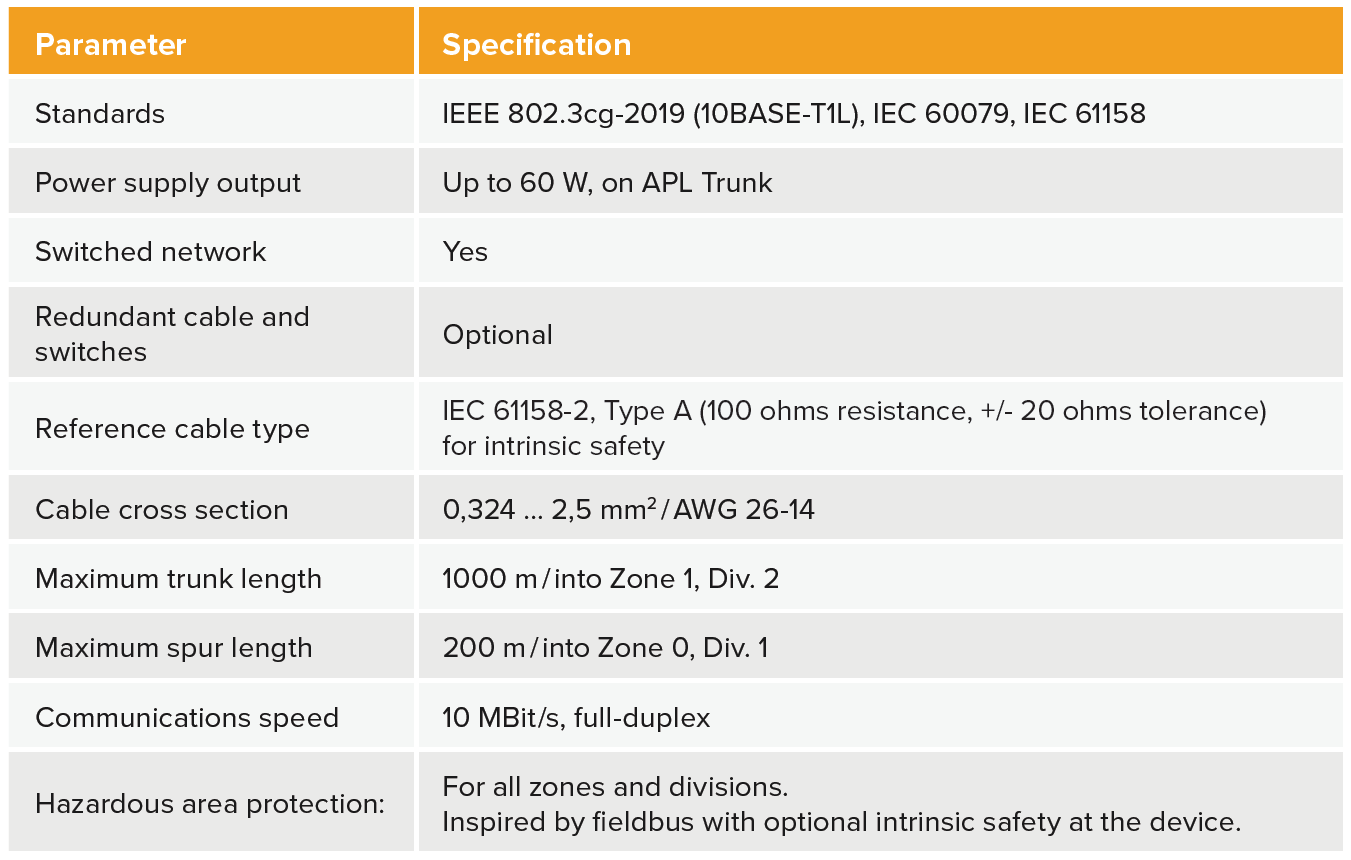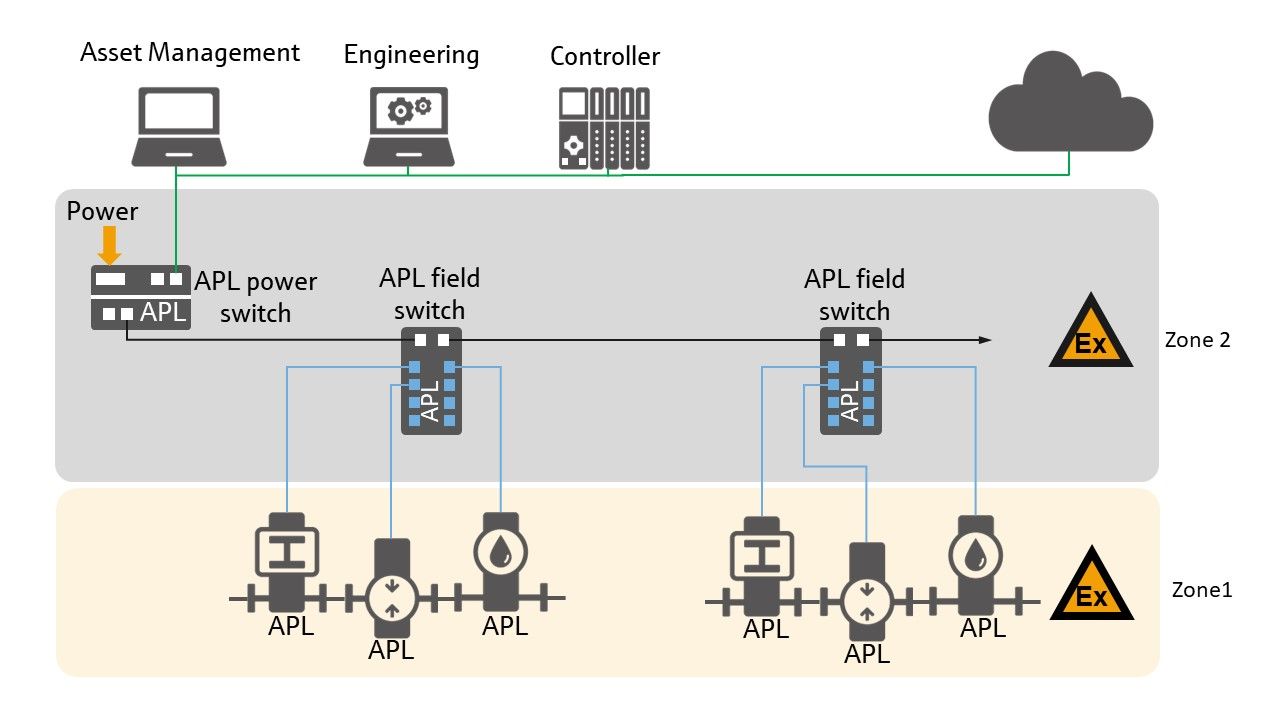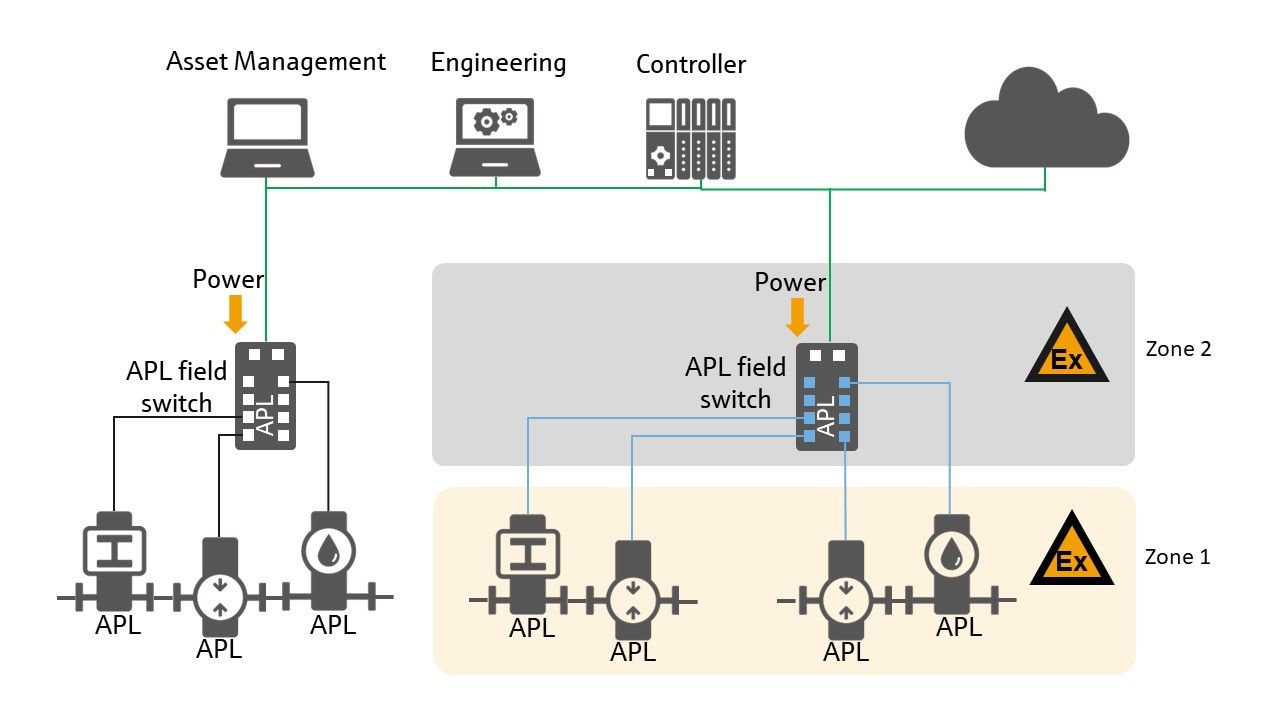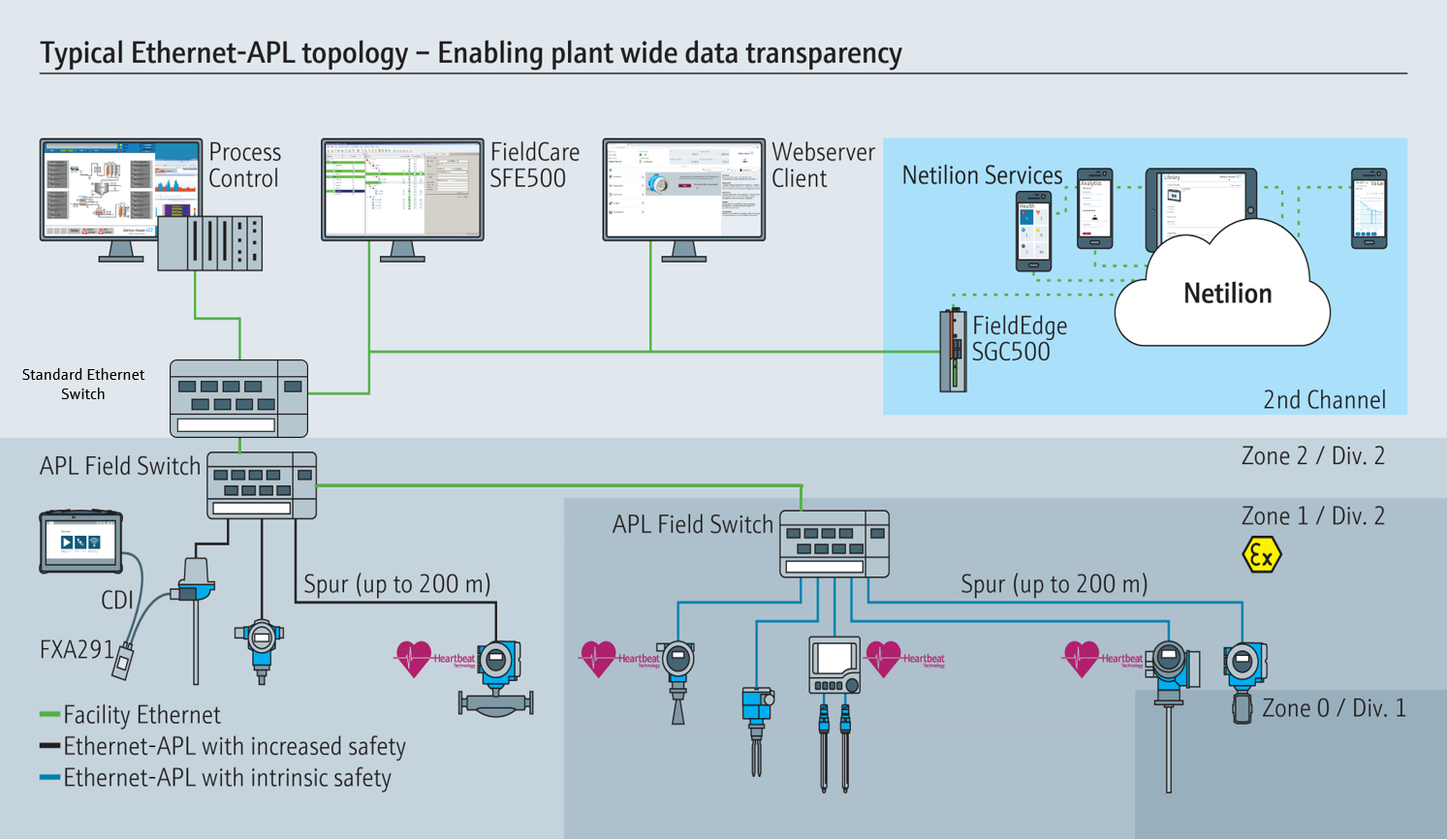Everything you need to know about Ethernet-APL in less than 5 minutes
Sure, you’ve heard of Ethernet-APL, but do you know why it’s a game-changer in the process automation industry? Let’s look at what you have to know to keep up with this topic
The first device I ever configured was a pneumatic differential-pressure transmitter. Okay, I never saw it actually work because it was just an exercise. But we still learned a lot about these types of old technology during my technical education.
During this time, Foundation Fieldbus was the newest technology, but we were already talking about the day when the field would be filled with Ethernet and wireless devices. A couple of years later, I was part of that change in technology, testing out these new devices.
We always wondered when we’d have power-over-Ethernet devices that made sense. The upper level of the automation pyramid was already filled with 4-wire Ethernet devices such as drivers, analyzers, and flow meters.
Well, time passes super fast, and here we are now, with Ethernet-APL finally up to flip the game. So let’s see how easy it’ll be to have a complete Ethernet plant very soon.
Table of Content
- What is Ethernet-APL?
- What are the benefits of the Ethernet-APL?
- What are the Ethernet-APL components and topologies?
- How easy is Ethernet-APL field installation?
- Ethernet-APL and Industrial IoT
What is Ethernet-APL?
First off, the APL stands for “advanced physical layer.” This physical layer supports many protocols – PROFINET, EtherNet/IP, OPC-UA, HART-IP and more.
The development of this technology was established in 2018 as “the APL project.” A broad list of organizations joined the project to enhance IEEE and IEC standards. The developers used existing standards, with the expectation of strong adoption by the market.
With that shielded 2-wire cable you already know, you’re going to have loop-powered communication with a reliable and straightforward network structure and topology. Ethernet-APL is full-duplex, using cable lengths of up to 1000 meters at 10 Mbit/s.
What are the benefits of the Ethernet-APL?
Good question. You’ll get plenty of benefits, the first one being flexibility regarding protocols supported in this physical layer. You can have whatever popular and standardized Ethernet protocol you want.
Later in this article, we’ll talk about how it plays with Industrial IoT, but for now, you should know that the physical layer aligns with most IIoT concepts you’ll find out there. Now, let’s list the practical gifts Ethernet-APL will bring to you like Santa:
- Low effort in network configuration
- Same tools in IT and OT for troubleshooting
- Minimal installation time and cost
- Ethernet-APL uses a 2-wire Fieldbus cable
- Long-distance (up to 1000 meters) support
- Digital communication and power on the same cable
- Ratings and certifications for hazardous areas and intrinsic safety
- Surge protection and resilience to electromagnetic interference
- Potential reuse of type-A Fieldbus cables, making migration easier than with other technologies
What are the Ethernet-APL components and topologies?
Ethernet-APL supports various topologies: trunk-and-spur or star topology. The connections are only point to point between each connection with the switches that constitute a segment.
Each Ethernet-APL switch isolates communication between the segments, eliminating any disturbance such as cross-talk. It also protects the communication from any problem or interference from devices in different segments.
Here are the technical attributes applicable to Ethernet-APL.

When we talk about switches, we also have two points that enable topological flexibility. First, we have the power switches that feed power and communication in one or more trunk ports. They’re externally powered.
Second, we have the field switches that provide ports where we can have spurs. The power, in this case, comes from the trunk or an external source.
This graphic shows an example of a trunk-and-spur topology:

This is a star topology:

How easy is Ethernet-APL field installation?
The developers of this technology wanted to increase the chances of broad adoption in the industry, so they used well-known types such as screw-type terminals, spring-clamp terminals, and M8 and M12 connectors. I’m sure you’re familiar with these, right?
The cable to implement Ethernet-APL is also familiar, the type-A Fieldbus cable (100 ohms resistance, +/-20 ohms tolerance), IEC 61158-2 used as reference cable for AWG classes 26-14 and wiring cross-section of 0.324 up to 2.5 mm2.
To reduce the wiring errors that occur in other technologies, Ethernet-APL adopted polarity independence. Field devices are not allowed to disturb each other, and their configuration is only done peer to peer.
The 2-WISE specification is an additional feature integrated into Ethernet-APL, which defines the parameters for intrinsically safe circuits. The concept is derived from FISCO. All the rules of an intrinsic application are the same, because field engineers and technicians are already familiar with them.
Field device configuration is quick with the wizard app and automatic setup; Ethernet-APL allows a high-speed data transfer for simple, fast commissioning. Industrial tablets such as the Field Xpert SMT70, along with smartphones and cable test devices, will become everyday tools for field technicians dealing with digital instruments.
Ethernet-APL and Industrial IoT
This technology was developed to be immediately implemented in actual concepts for the Industrial Internet of Things, to simplify the construction, commissioning, and operation of processing plants. To ease the way, we have NAMUR Open Architecture (NOA) and Open Process Automation Standards (O-PAS™) by the Open Process Automation Forum (OPAF).
With IIoT cloud-based services, such as Netilion Ecosystem from Endress+Hauser, we’ll soon have Ethernet-APL applications to support connectivity between the field and the cloud, providing the right services for different purposes like diagnostics and predictive maintenance.

These applications allow transparent integration between OT and IT, focusing on achieving a single network technology. Stay tuned – we’ll bring more information about Ethernet-APL, applications, and technical advice soon.
See you then!
Click here to learn more about Ethernet-APL.



